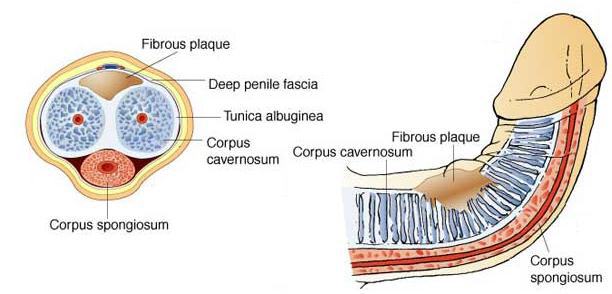
New Treatment For Enlarged Prostate
April 26, 2018
Erection recovery after prostate cancer surgery or radiation – Australia Radio Interview with Dr. Tajkarimi
May 13, 2018Have you ever heard of Peyronie’s disease? Millions of men worldwide, mostly caucasian, have this condition which can dramatically affect their sex life, and wellbeing.
Peyronie’s disease is a condition where scar tissue, also called plaque, forms inside the penis. The plaque gradually builds up inside the tunica albuginea, a thick elastic fibrous tissue which surrounds the corpus cavernosum, and does not swell along with the healthy tissue during an erection. In extreme cases, this causes a severe bend in the penis either upwards or to the side, leading to severe pain and sexual difficulty. Many men suffering from this condition have anxiety and depression.
The condition is estimated to affect up to 23% of men between the ages of 40 and 70. Peyronie’s disease is rare in young men, and the chances of developing it increase with age.
Medical experts do not yet know the exact cause. Current research indicates two leading theories. The first is that the condition is caused by injury to the penis, where internal bleeding and swelling causes blood clots to form, which then release substances that create an excess of scar tissue. Studies show that men who engage in vigorous sexual or nonsexual activity which cause acute or chronic injury to the penis may have a higher risk of Peyronie’s disease.
The second theory says the condition is related to certain autoimmune disorders which sometimes attack cells in the penis, causing inflammation and scarring. Links have been shown between Peyronie’s disease and autoimmune disorders. Plantar fasciitis and scleroderma have also been associated with Peyronie’s disease.
If you or a loved one is showing symptoms, you should immediately see your doctor and consult with a urologist who is comfortable managing Peyronie’s disease. Although Peyronie’s disease may fade on its own, any curvature which has developed will remain if untreated. Unfortunately oral medications and supplements have not shown much success. Other treatments include injecting collagenase, Verspamil, or interferon directly into the plaque, along with ultrasound or radiation therapy to break it up. Penile traction systems and vacuum devices could also potentially be helpful.
Exciting research is ongoing for the role of shockwave therapy in combination with penile traction for noninvasive Peyronie’s management. In select cases, surgery may be needed and is often successful to break or remove the plaque or to straighten the penis. Men with severe erectile dysfunction and Peyronie’s disease would benefit from a penile prosthesis.
